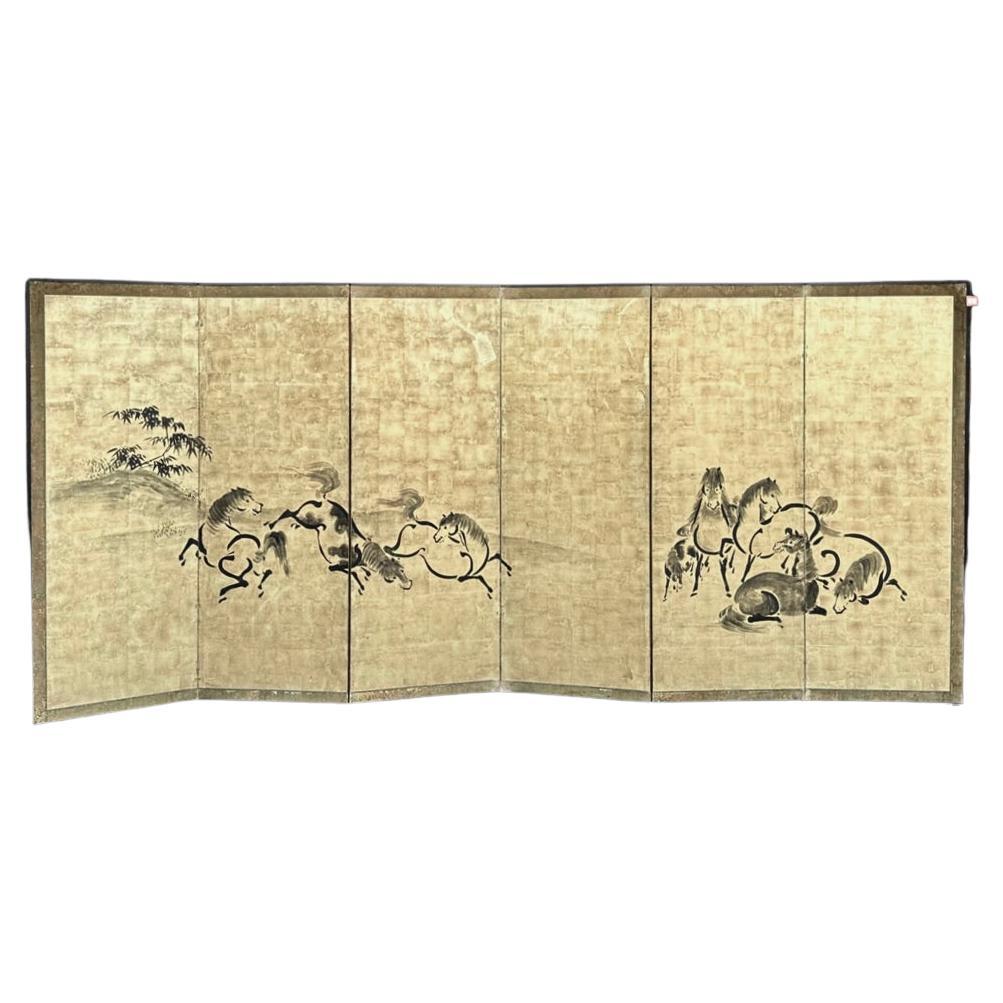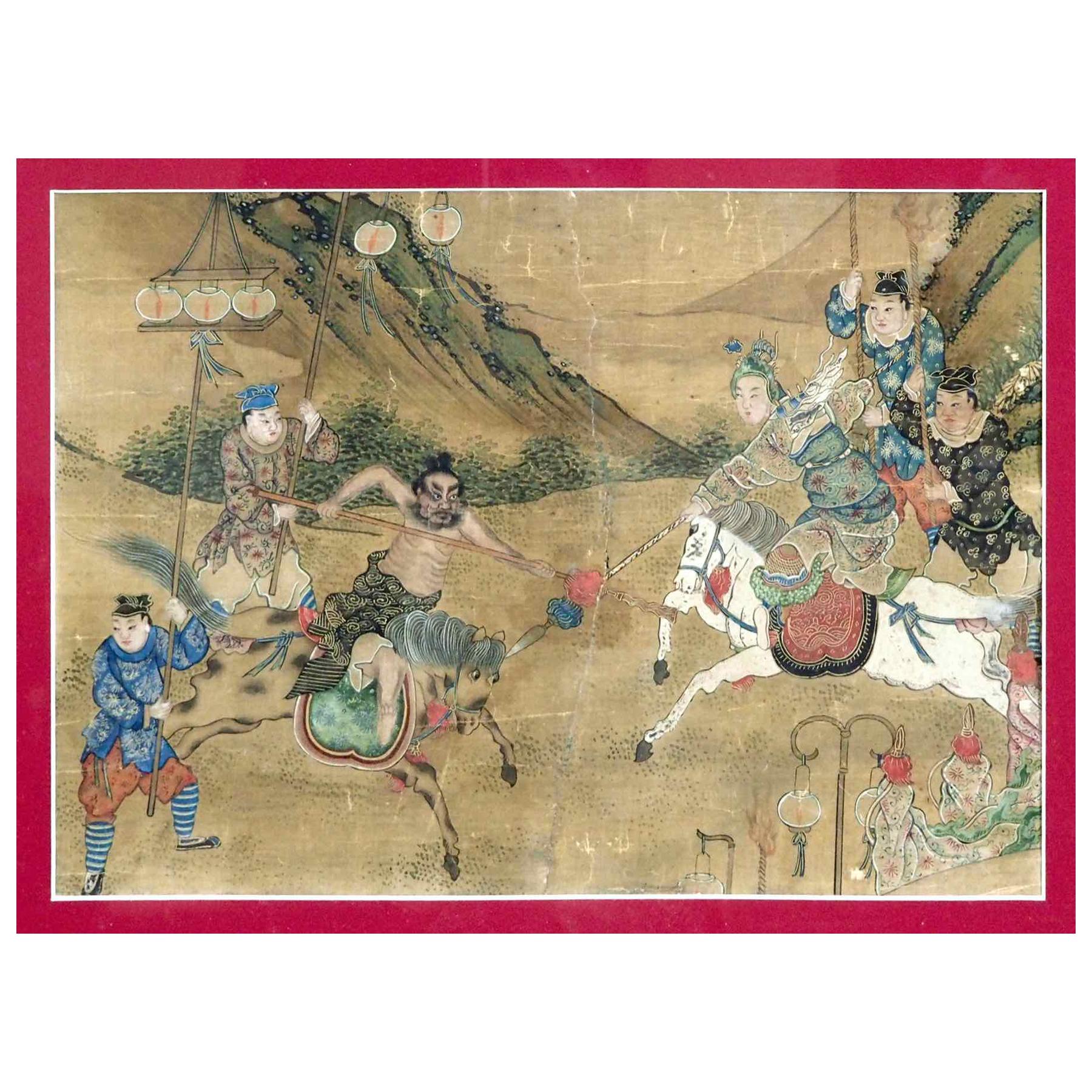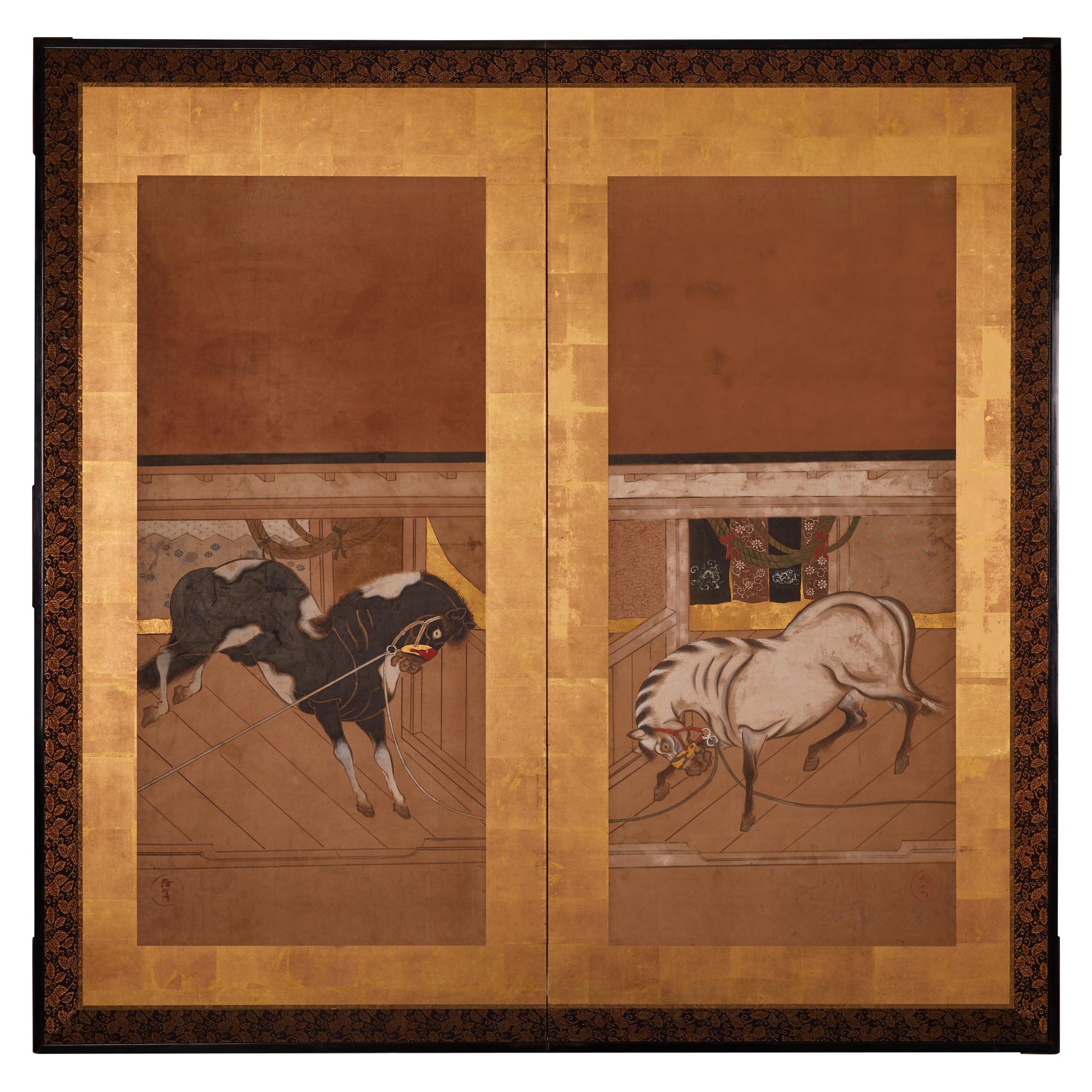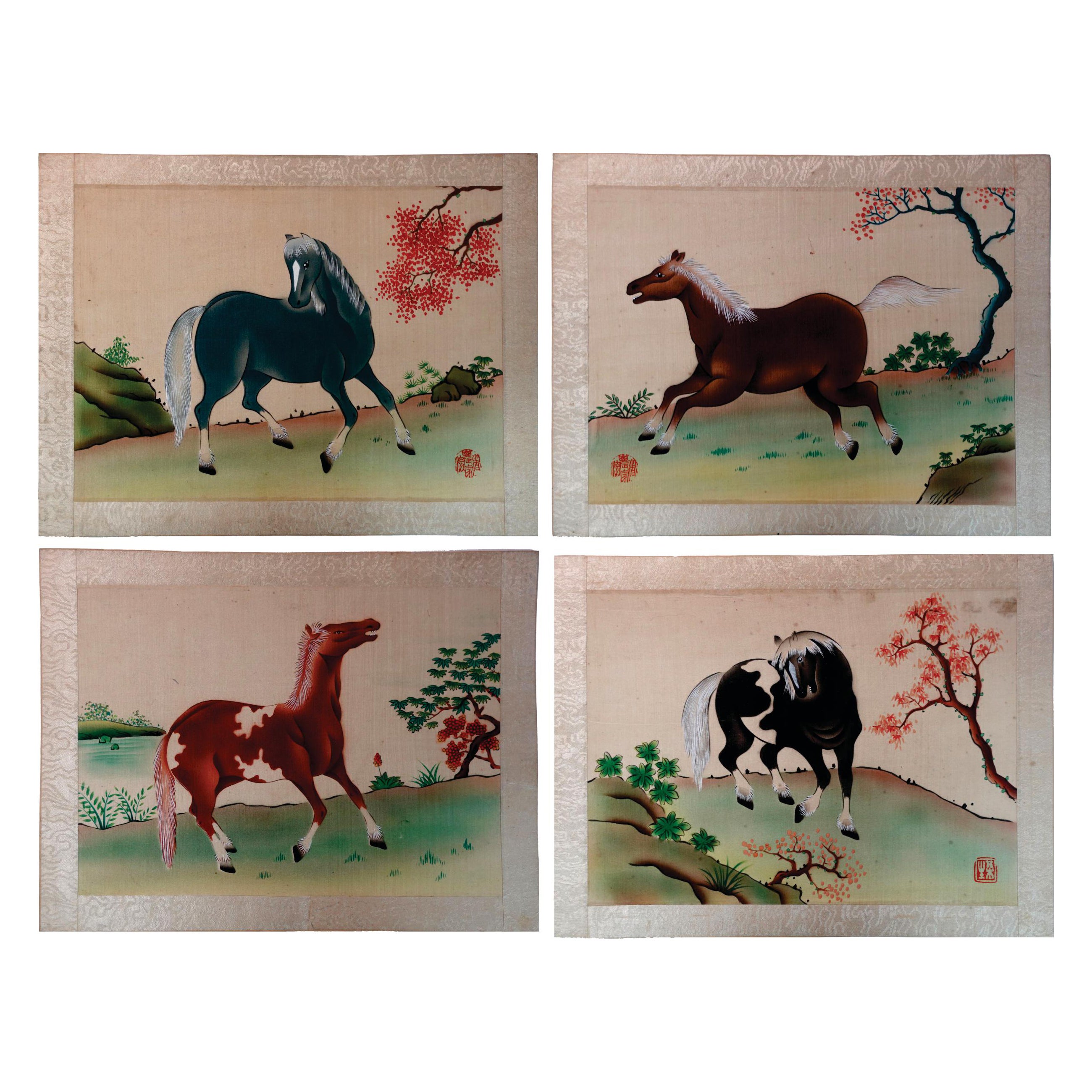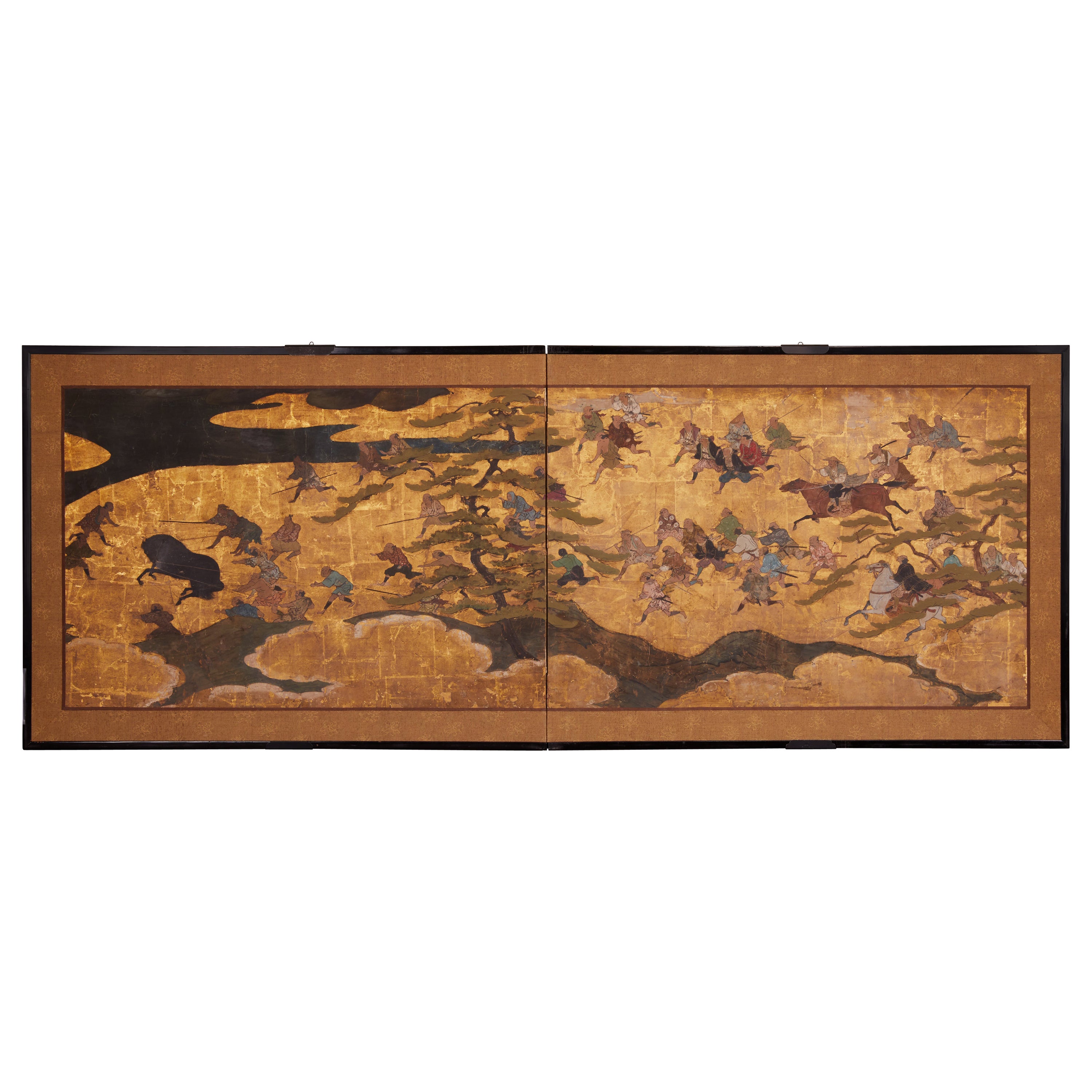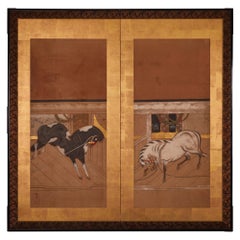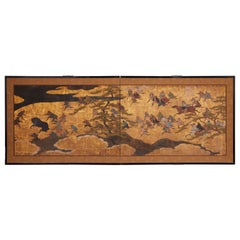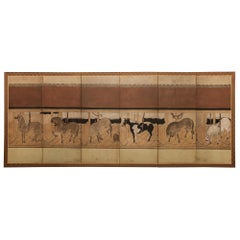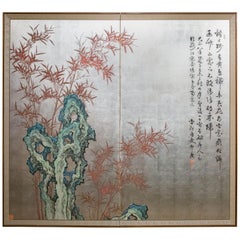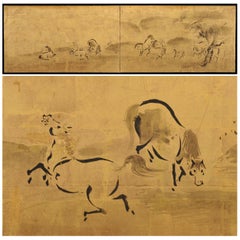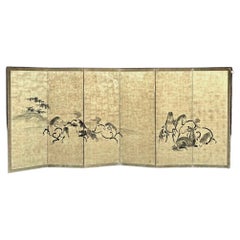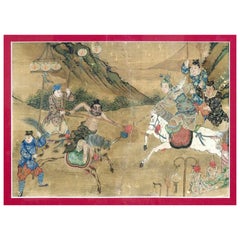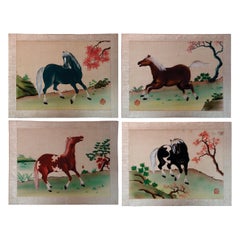Items Similar to Japanese Screen Painting of Stallions
Want more images or videos?
Request additional images or videos from the seller
1 of 2
Japanese Screen Painting of Stallions
$15,000
£11,387.74
€13,025.15
CA$20,957.18
A$23,308.95
CHF 12,171.21
MX$283,645.17
NOK 155,444.94
SEK 145,779.93
DKK 97,211.69
Shipping
Retrieving quote...The 1stDibs Promise:
Authenticity Guarantee,
Money-Back Guarantee,
24-Hour Cancellation
About the Item
Japanese two panel screen: Painting of stallions.
Kano school of painting.
Mineral pigments on mulberry paper.
- Dimensions:Height: 55.25 in (140.34 cm)Width: 50.5 in (128.27 cm)Depth: 1.5 in (3.81 cm)
- Place of Origin:
- Period:
- Date of Manufacture:circa 1880
- Condition:Condition report upon request.
- Seller Location:Hudson, NY
- Reference Number:Seller: S8081stDibs: U081105855154
About the Seller
5.0
Recognized Seller
These prestigious sellers are industry leaders and represent the highest echelon for item quality and design.
Established in 1971
1stDibs seller since 2008
166 sales on 1stDibs
Typical response time: 13 hours
Associations
The Art and Antique Dealers League of AmericaAntiques Associations Members
- ShippingRetrieving quote...Shipping from: Hudson, NY
- Return Policy
Authenticity Guarantee
In the unlikely event there’s an issue with an item’s authenticity, contact us within 1 year for a full refund. DetailsMoney-Back Guarantee
If your item is not as described, is damaged in transit, or does not arrive, contact us within 7 days for a full refund. Details24-Hour Cancellation
You have a 24-hour grace period in which to reconsider your purchase, with no questions asked.Vetted Professional Sellers
Our world-class sellers must adhere to strict standards for service and quality, maintaining the integrity of our listings.Price-Match Guarantee
If you find that a seller listed the same item for a lower price elsewhere, we’ll match it.Trusted Global Delivery
Our best-in-class carrier network provides specialized shipping options worldwide, including custom delivery.More From This Seller
View AllJapanese Two Panel Screen: Horses in Stable
Located in Hudson, NY
A pair of captivating black and white horses, believed to define hard work and power in Japanese mythology, are beautifully rendered in this painting of mineral pigments on mulberry ...
Category
Antique Early 19th Century Japanese Paintings and Screens
Materials
Bronze, Gold Leaf
Japanese Two Panel Screen: Horse Roundup
Located in Hudson, NY
Interesting and unusual subject matter, Tosa School painting in mineral pigments on gold leaf with silk brocade border.
Category
Antique Late 17th Century Japanese Paintings and Screens
Materials
Gold Leaf
Japanese Six-Panel Screen Horses in Stable
Located in Hudson, NY
Kano School painting of horses in stabile, with a monkey. Mineral pigments on mulberry paper with silk brocade border.
Category
Antique Late 18th Century Japanese Edo Paintings and Screens
Materials
Silk, Wood, Paper
Japanese Two-Panel Screen Chinese Style Painting with Calligraphy
Located in Hudson, NY
Painting of a perforated garden stone with red bamboo growing behind. Chinese zekku poem reads, "Returning home to my grass hut on a spring evening," by the Tang-poet Qian Qi. Screen...
Category
Early 20th Century Japanese Taisho Paintings and Screens
Materials
Silk, Paper, Wood
Japanese Screen: Animals and Flowers in a Landscape with Rising Sun
Located in Hudson, NY
Edo period (c. 1800) screen, beautifully painted with excellent details. Kano School painting at its best. An exuberant Audobon landscape being observed by a cat and her kitten. A...
Category
Antique Early 19th Century Japanese Edo Paintings and Screens
Materials
Gold Leaf
Japanese Two Panel Screen Manchurian Crane and Turtles
Located in Hudson, NY
In Japan, cranes symbolize fidelity as they mate for life and turtles symbolize longevity. Additionally, this screen also has the Japanese motif of sho-chiku-bai, or the three friends of winter (pine, plum, and bamboo). So called the three friends of winter because all three flourish during the cold months. This screen was originally fusuma doors...
Category
Antique Mid-19th Century Japanese Edo Paintings and Screens
Materials
Paper
You May Also Like
Japanese Screen Painting, circa 1700 'Horses' by Kano Tanshin
Located in Kyoto, JP
Horses
Kano Tanshin Morimasa (1653-1718)
Two-panel tea-ceremony Japanese screen or furosaki
Ink on gold leaf,
late 17th-early 18th century
Measures: H 55 cm x W 182 cm
The Kano school was closely aligned with the warrior class in Japan. The samurai, who lived in a closed and rigid hierarchical society established by the Shogunate, were drawn to the energy and freedom horses symbolize; Kano school artists commonly depicted the equine creatures as they are here, in unfettered and carefree family groups. China originally introduced horse paintings to Japan; the works typically focused on capturing the essence of horses in their various environments and often involved integrating human figures into the images.
Kano Tanshin Morimasa (1653-1718) was the son of Kano Tanyu...
Category
Antique 1690s Japanese Edo Paintings and Screens
Materials
Gold Leaf
Elegant Horse Screen. In style of Kano Tanshin
By Kano Tanshin
Located in Fukuoka, JP
Ink on gold.
This continuation of equine grace unfolds across a stunning gold-leaf backdrop, capturing the essence of nobility that horses represent in Japanese lore.
The screen de...
Category
Antique Late 18th Century Japanese Edo Paintings and Screens
Materials
Gold Leaf
Beautiful Chinese Painting, 18th Century
Located in Aalsgaarde, DK
Beautiful Chinese painting, 18th century.
Measures: H 32, W 45 cm
H 12.5, W 17.7 in.
Category
Antique 18th Century Chinese Paintings
4 Chinese Export Watercolor Paintings "Horses" on Silk Stamped, 19th Century
Located in Norton, MA
4 Chinese paintings of horses with different colors and poses. Watercolor and gouache on silk. Red seals, mounted on thick heavy paper and silk borders with no frames, from the 19th ...
Category
Antique Early 19th Century Chinese Paintings
Materials
Paper, Silk
Japanese Antique Bold Hand-Painted "Two Horses" Silk Scroll, Meiji Period
Located in South Burlington, VT
A bold, spectacular Japanese hand-brushed, hand-painted silk scroll of two horses below plumb tree mountain- worthy of your favorite room
Hand painting on silk in simple soft pleasin...
Category
Antique Late 19th Century Japanese Meiji Paintings and Screens
Materials
Silk
Large Antique Horizontal Japanese Painting
Located in Lambertville, NJ
An antique horizontal Japanese Meiji period qouache watercolor painting with black lacquered frame under glass. 65.5 inches long, 17inches high. Th...
Category
Antique 1880s Japanese Meiji Paintings and Screens
Materials
Glass, Hardwood, Paper
More Ways To Browse
19th Century Japanese Screen
Kano School
Japanese Kano Screen
Japanese Screen Kano School
Kano School Screen
Japanese Screens Large
Chinese Silk Paintings
Asian Framed Silk Art
Asian Wall Panels
Asian Panel Lacquer
Japanese Silk Screen Painting
Hand Painted Chinese Screen
Hand Painted Silk Screen
Vintage Japanese Lacquer
Chinese Paper Screens
Chinese Framed Panel
Hand Painted Japanese Screen
19th Century Chinese Screen

